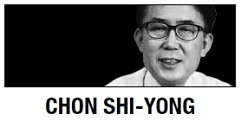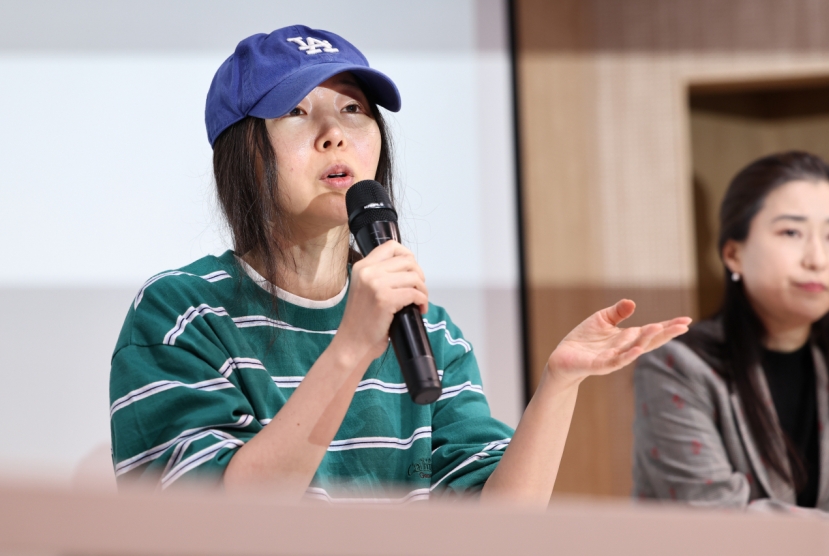“Silk Road” and “Eurasia” are now the hot buzzwords in China and South Korea, with their leaders pushing national projects to restore the ancient trade and cultural route that linked Europe to East Asia.

Chinese President Xi Jinping proclaimed the “One Belt, One Road” policy in September 2013. It envisages to connect China with Central Asia, Southeast Asia, the Middle East, Europe and even Africa through the land-based “Silk Road Economic Belt” and the sea-based “21st Century Maritime Silk Road.”
One month later, South Korean President Park Geun-hye announced the “Eurasia Initiative,” a proposal to link the countries on the Silk Road through transport and energy networks — like railroads and gas pipelines. Her aim, of course, is to bring North Korea into the fold.
Having become a pet project of the leaders, the One Belt, One Road policy and the Eurasia Initiative are spawning a lot of activities, events and proposals in the two countries. But neither the leaders nor their aides had thought about the idea of linking universities on the Silk Road route.
Idea hatched six years ago
Such a thought struck Hwang Sung-don, a professor at Hankuk University of Foreign Studies, in 2009 when he served as a member of an advisory panel for the mayor of Pyeongtaek. The Korean city hosted the Fourth U.N. Silk-road Mayors’ Forum in that year.
“I thought connecting universities in the cities on the ancient Silk Road would be one of the best ways to facilitate the restoration of the spirit of the route,” Hwang said.
Hwang’s idea and the consequent years of work bore fruit last weekend in Gyeongju: 34 universities from 22 countries launched their alliance — the Silk Road Universities Network.
The 300 participants — presidents, professors and students — in the inaugural assembly included those from the University of Coimbra in Portugal, the western departure point of the Maritime Silk Road, and Ca Foscari University of Venice in Italy, where Marco Polo started his journey to China. Also represented were universities from Greece, Turkey, Mongolia, Kazakhstan, Oman and China.
The SUN elected HUFS President Kim In-chul as its inaugural chairman and named Hwang as the secretary-general. The network also inaugurated three affiliates — the United Presidents of the SUN, the International Association for Silk Road Studies and the United Students of the Silk Road Universities Network.
Hwang, who visited more than 20 cities to set up the alliance, said that these groups would play leading roles in its future activities and programs, including a cross-Silk Road rally of eco-friendly automobiles driven by students, a voyage along the Maritime Silk Road and sports events like a soccer tournament and relay marathon.
Interdisciplinary, cross-border education
As the architect of the alliance, Hwang’s first dream is to open a Silk Road cyber university that will engage in interdisciplinary, multilingual and cross-border research and education.
“We will develop a joint curriculum on the Silk Road, introduce an Internet-based joint teaching program and allow cross-recognition of credits,” Hwang said, noting that HUFS opened an introductory course on the Silk Road in the first semester. This collaboration could lead to the establishment of an online university through which the partner institutions could share their higher education resources, he said.
“It would not be easy for professors and students from different cultures and diverse language backgrounds to work together, but it truly represents the spirit of the Silk Road,” he said.
Listening to Hwang, it occurred to me that such academic and schooling collaborations could be easier to achieve than the much-touted One Belt, One Road Policy and the Eurasia Initiative, both of which have to surmount a lot of political, economic and geographical challenges.
For instance, Xi’s push to build the new Silk Road already faces suspicion from those who worry about China’s hegemonic advancement, while Park’s ambitious plan to link the inter-Korean railroad to the Trans-Siberia and Trans-China railways encounters the trickiest hurdle — North Korea.
In contrast, SUN, as a network of higher learning institutions, would be able to find commonalities among the nations and promote collaborations rather easily. Nowhere could the spirit of the ancient Silk Road — exchange, cooperation, openness and inclusiveness — be better reflected in the joint programs to be pushed by the network.
Moreover, wouldn’t it be amusing to see young students from the vast region getting acquainted with each other, promoting friendship and cooperation? That certainly would help promote peace and harmony among the countries on the route.
Meanwhile, why did they inaugurate the university alliance in Gyeongju? The Korean city hosts the World Cultural Expo, which this year included the Silk Road Cultural Festival.
What does Gyeongju have to do with the Silk Road? The Korean city, which was capital of the Silla Kingdom (B.C. 57 — A.D. 935), had some relics presumably transported along the ancient route, including glassware from the Mediterranean region and Scythian gold rhytons.
Regarding the eastern end of the ancient Silk Road, the Chinese do not accept any claim other than Xian. Perhaps this could be one of the first subjects on the joint curriculum to be developed by the university network.
By Chon Shi-yong
Chon Shi-yong is the chief editorial writer of The Korea Herald. He can be reached at sychon@heraldcorp.com">sychon@heraldcorp.com. — Ed.



![[Herald Interview] 'Amid aging population, Korea to invite more young professionals from overseas'](http://res.heraldm.com/phpwas/restmb_idxmake.php?idx=644&simg=/content/image/2024/04/24/20240424050844_0.jpg&u=20240424200058)















